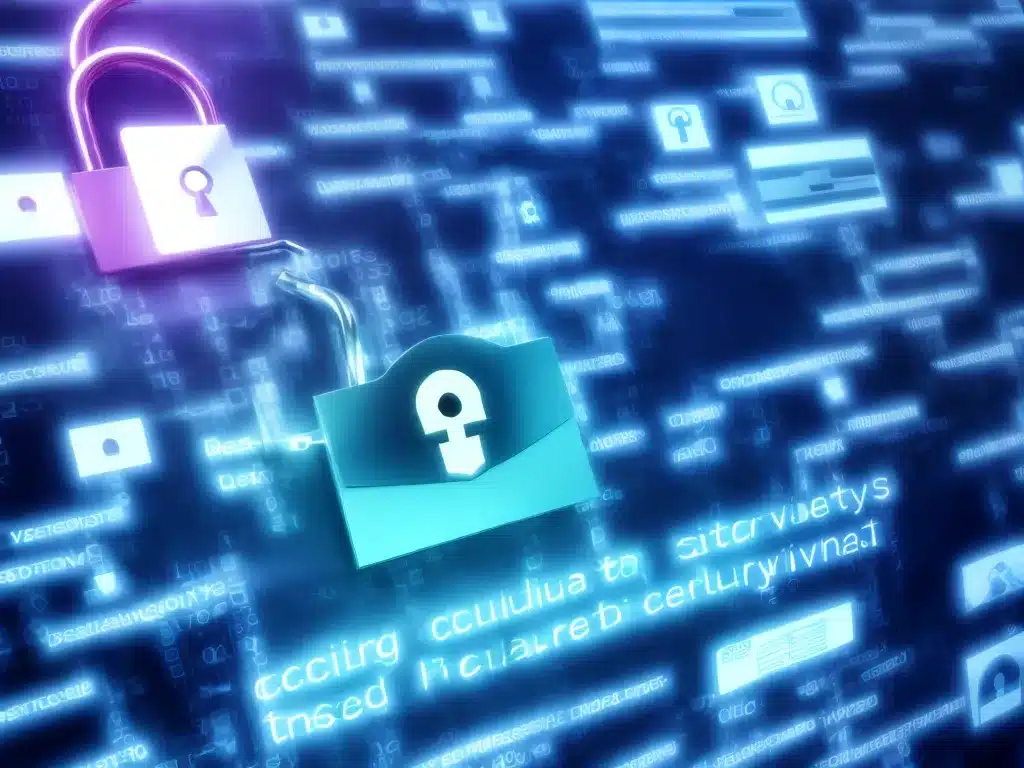Introduction
Data breaches and cyber attacks are on the rise. As an employee, I have a responsibility to help protect my organization’s data. By following security best practices, I can play a key role in building a culture of data security. In this article, I will share tips and strategies to strengthen data security through employee actions.
Secure Your Accounts
My user accounts are the front door to sensitive data. I need to keep them locked up tight. Here are a few best practices:
-
Use strong passwords. I avoid obvious passwords like
12345orpassword. Instead, I create long passphrases with Uppercase, lowercase, numbers, and symbols. I also change passwords regularly. -
Enable two-factor authentication. This adds an extra layer of protection by requiring two forms of identification. I set this up wherever it’s offered.
-
Be wary of phishing. I watch for suspicious emails asking me to update credentials. I verify links and senders before clicking or entering info.
-
Log out of accounts. I log out of programs and accounts when not in use. This prevents unauthorized access.
Handle Data Carefully
I aim to handle data thoughtfully to avoid costly mistakes. Here are some data security tips:
-
Classify data. I understand my organization’s data classification system and handle data accordingly. More sensitive info like customer records may have stricter controls.
-
Encrypt data. For very sensitive data, I work with IT to encrypt data in transit and at rest. This scrambles info to make it unreadable without a key.
-
Avoid public wi-fi. I avoid accessing company data or accounts on public networks. It’s easier for hackers to intercept data on open networks.
-
Report data exposures. If I accidentally email sensitive data to the wrong person or lose a device containing private info, I immediately inform IT and leadership. Quick response can reduce damage.
Use Caution with Devices
My computers, phones, tablets, and other devices provide access to company systems. Following device security best practices is critical:
-
Keep devices locked. I use strong passcodes or fingerprints to lock devices when not in use. This prevents unauthorized access if lost or stolen.
-
Install updates. I apply security patches and software updates as soon as they are available. Updates often address vulnerabilities.
-
Use antivirus software. I ensure my work devices have up-to-date antivirus software installed. This detects and blocks malware.
-
Enable encryption. I work with IT to enable full-disk encryption on my work devices. Encryption scrambles data at rest.
-
Report loss. If I lose a work device, I immediately file a report. IT can then remotely lock or wipe the device.
Stay Vigilant Against Threats
While technology provides security controls, employees must stay alert. I aim to:
-
Watch for red flags. If I notice odd behavior on my computer or suspicious emails, I alert IT immediately. Early reports can prevent bigger problems down the road.
-
Complete training. I take advantage of security awareness trainings. These help me identify risks and handle data properly.
-
Speak up about concerns. If I ever feel security controls are lacking or observe questionable behavior from colleagues, I notify my manager or IT.
-
Stay current on policies. I regularly review security and data handling policies. I ask questions if I don’t understand expectations.
Foster a Security-First Culture
Data security is a team effort. In addition to securing my own work:
-
I share tips and reminders with colleagues to help everyone strengthen security.
-
I lead by example by making data protection a priority in all of my work.
-
I give feedback to leadership on ways to improve security through controls, training, and policies.
-
I recognize coworkers who demonstrate excellence in data security practices.
By taking responsibility for security, I contribute to building an organizational culture where data protection is baked into everything we do. We all have a role to play in safeguarding our data.
Conclusion
As an employee, my daily actions impact data security. By using strong account protections, handling data with care, securing devices, watching for threats, and promoting security-conscious behavior, I can significantly strengthen defenses. Building a robust security culture takes time but is well worth the investment for protecting our customers, reputation, and future success.












